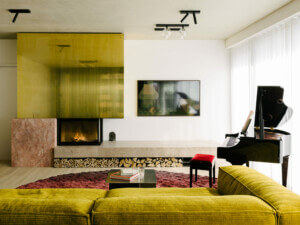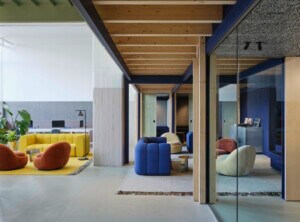Herzog & de Meuron’s winning proposal for the Museum of the 20th Century extension in Berlin has been called into question by German architect Wilfried Wang, the co-founder of Berlin-based Hoidn Wang Partner and (since 2002) the O’Neil Ford Centennial Professor at UT Austin’s School of Architecture. Wang believes the Swiss firm’s design is severely lacking in both architectural and urbanist respects.
Speaking in The Competition Project (whose editor translated Wang’s commentary, which first appeared in the German journal Bauwelt last year), Wang first discusses the project’s relationship with its immediate surroundings: Mies van der Rohe’s Neue Nationalgalerie (completed in 1968) and the Hans Scharoun’s Berlin Philharmonic concert hall (completed in 1963).
By extending the form of this introverted structure to cover the entire competition site, little or no value is added to the immediate environs. To the contrary, that and the immense surfaces of the facades, right up to the edge of the pedestrian walkways, only serve to diminish the importance of the surrounding buildings. All the trees to the south of the site will disappear, and 90% of the outer walls of the building, regardless of the suggested use of porous brick detailing, are completely closed off.
Next in the firing line was the proposal’s program:
The corridors stacked over one another, labeled “Boulevards” by the architects, are connected in the quadrants by smaller corridors and stairs. The metaphor, “Boulevard,” is as misleading as was Le Corbusier’s “rue intérieur.” Boulevards are accessible 24 hours a day as open public spaces. In the evenings these corridors will be closed to the public. Rectangular exhibit areas are placed on three levels—not easily accessible to the visitor as a result of the labyrinth-like circulation plan.
Wang wasn’t too pleased with much of the competition’s submissions either. Few, he argued, failed to mediate space between the two already existing icons that inhabit the vicinity. New York studios SO-IL, Snøhetta, and REX were in the running for the $218.8 million project, along with British firms Zaha Hadid Architects and David Chipperfield Architects.
The most extreme anti-urbanistic example honored by the jury with a merit award was OMA’s pyramid-like scheme, completely blocking any relationship between Mies and Sharoun by inserting their own icon in between the two.
By contrast, the shortlisted designs that entered the fray during the first open competition, Wang argues, were “more modern, sensitive, and led one to assume that a different solution would be in store.” These notions did filter into the competition’s final stage, said Wang, with SANAA and Sou Fujimoto’s (both from Japan) less disruptive proposed interventions.
Note: For his Master’s degree in 1981, Wang researched six cultural centers including London’s South Bank Centre, Paris’s Centre Beaubourg and Berlin’s Kulturforum. In 1992 he published a monograph on the work of Herzog & de Meuron.










